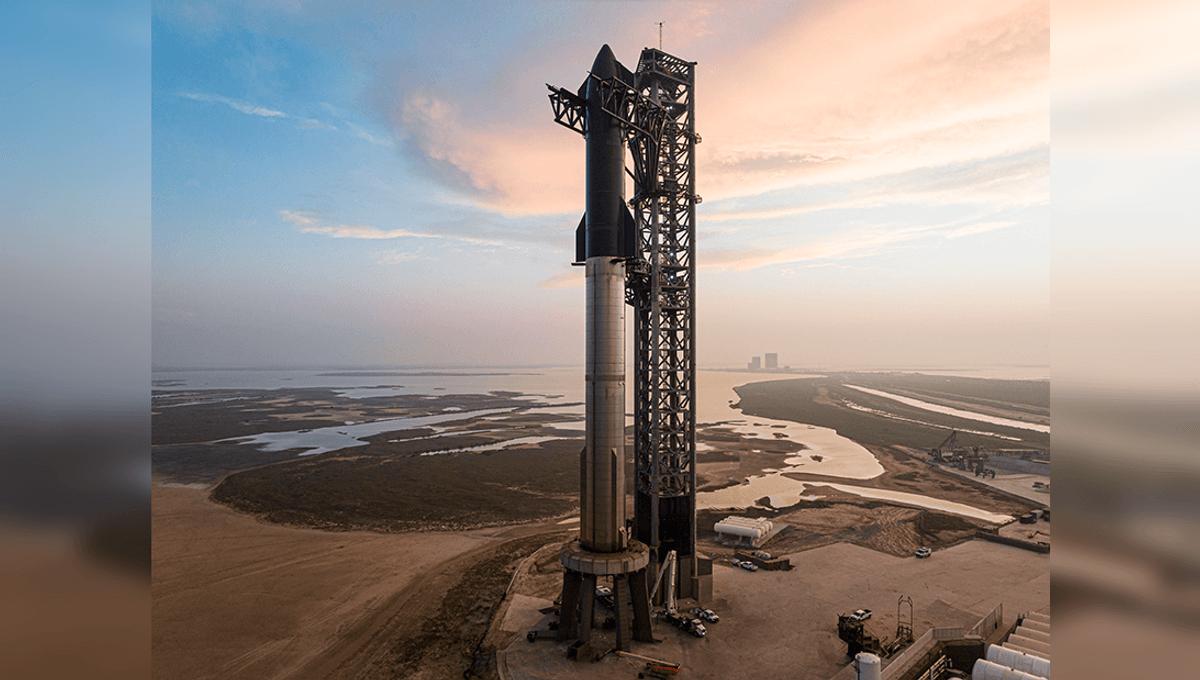Get Ready for the Epic Starship Launch!
The countdown has begun! The most powerful rocket ever built, Starship, is currently at SpaceX’s Starbase launch facility in south Texas, eagerly awaiting liftoff. Brace yourselves for an incredible spectacle on Friday, November 17, as Starship embarks on its historic journey into space. The launch window opens at 8 am ET (1 pm UTC), giving us a thrilling 2-hour window to witness this monumental event.
If all goes according to plan, Starship will soar eastward for 90 minutes over the Gulf of Mexico, reaching a near-orbital speed of 28,160 kilometers per hour (17,500 miles per hour) and an altitude of 250 kilometers (150 miles). Finally, it will gracefully splash down near Hawai’i. This mission is a crucial step towards the Artemis missions, and SpaceX’s reusable stages will play a vital role in its success. However, unlike its Falcon Heavy predecessors, Starship will not attempt the iconic vertical landings.
Prepare for the Titan of Rockets!
Starship is an engineering marvel, towering at an impressive height of 122 meters (400 feet) when fully stacked. This behemoth consists of the “Starship” upper stage and the “Super Heavy” first stage booster. To put its grandeur into perspective, NASA’s Space Launch System (SLS) rocket, standing at 98 meters (322 feet), pales in comparison. These two colossal rockets coexisting simultaneously is a testament to human ingenuity and progress. With their immense lifting capabilities, they have the potential to transport larger payloads than ever before, including colossal objects to the Moon.
The success of Starship is paramount to NASA’s ambitious plans of returning humans to the Moon. SpaceX’s contract with the agency involves using this mighty rocket to ferry astronauts to and from the Moon for the Artemis III and Artemis IV missions. Any delay in Starship’s progress could potentially push back the eagerly anticipated lunar landing, currently scheduled for 2025.
The Explosive Tale of Starship’s First Launch
Starship’s initial launch in April was a sight to behold, albeit with a twist. While the rocket did take flight, the stages failed to separate as planned. To prevent any mishaps, SpaceX made the difficult decision to intentionally blow up the rocket, ensuring it stayed on course. This unexpected turn of events caused some damage to Starbase, with debris raining down and even damaging a chunk of concrete beneath its orbital launch mount.
Witness the Spectacle Unfold!
Don’t miss out on the excitement! You can catch Starship’s second test flight launch tomorrow via SpaceX’s official website and their social media platforms, including X (formerly Twitter) and YouTube. Coverage begins at 7:30 am EST (12:30 am UTC), so mark your calendars and prepare to be amazed.
In case the launch conditions are not favorable, keep your hopes up as backup launch windows are available on Saturday, November 18, and Sunday, November 19. Stay tuned for further updates on the timings.








